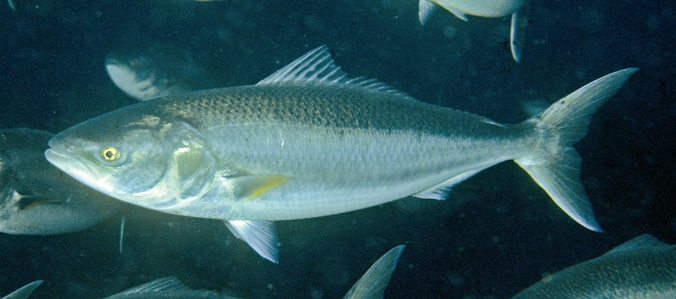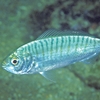General Description
Body long, slender, streamlined; edge of bone under eye with prominent serrations in smaller fish; scales smooth to touch in large fish. Dark blue green above, silvery white below; golden bars on upper half of body in juveniles, spots in slightly larger individuals; pectoral fin bright yellow, other fins clear, caudal and spinous portion of dorsal with blackish margin. Similar to the Eastern Australian Salmon, and distinguished by counting gill rakers. To 75 cm.
Biology
The Western Australian Salmon is a very popular angling fish, renowned as a fighter on rod and reel. It is also commercially important, although the flesh is rather dry and soft. Large schools migrate along the open coast.
Habitat
Open coast, especially off beaches, juveniles in bays and estuaries, in depths of 0-30 m.
Open water
Distribution guide
Southern Australia. More common in Port Phillip Bay than the Eastern Australian Salmon.
Species Group
Depth
Shore (0-1 m)
Shallow (1-30 m)
Water Column
Max Size
75 cm
Commercial Species
Yes
Global Dispersal
Native to Australia
Conservation Status
- DSE Advisory List : Not listed
- EPBC Act 1999 : Not listed
- IUCN Red List : Not listed





